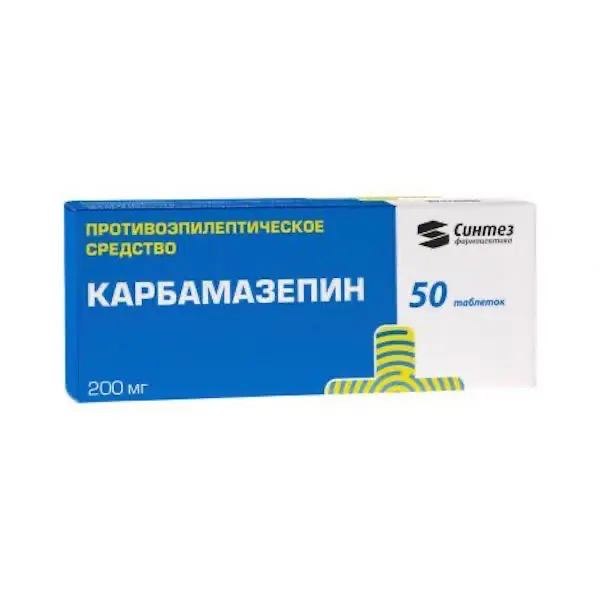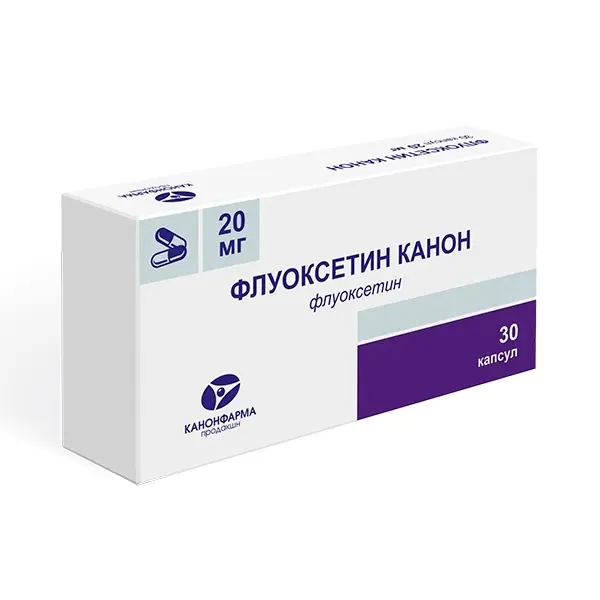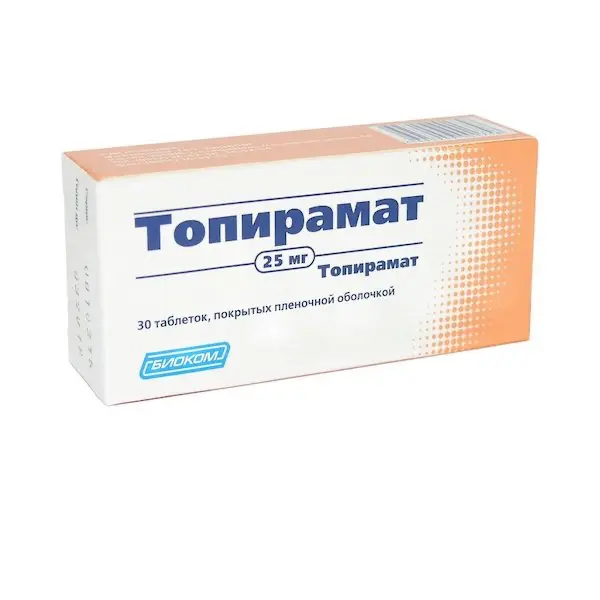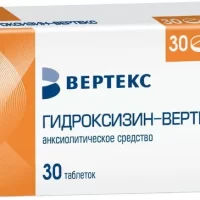Description
Carbamazepine Pharmacodynamics
Antiepileptic agent (dibenzazepine derivative), also has antidepressant, antipsychotic and antidiuretic effects. It also has analgesic effect in patients with neuralgia.
The mechanism of action is associated with blockade of potential-dependent Na+-channels, which leads to stabilization of the neuronal membrane, inhibition of the occurrence of serial discharges of neurons and reduction of synaptic conduction of impulses. Prevents the reformation of N+-dependent action potentials in depolarized neurons. Reduces the release of the excitatory neurotransmitter amino acid glutamate, increases the reduced central nervous system seizure threshold and thus reduces the risk of an epileptic seizure. Increases conductance for K+, modulates potential-dependent Ca2+ channels, which may also determine the anticonvulsant effect of the drug.
Corrects epileptic personality changes and, eventually, increases patients’ communicability and contributes to their social rehabilitation. It can be prescribed as the main therapeutic drug and in combination with other anticonvulsants.
Effective in focal (partial) epileptic seizures (simple and complex), accompanied or not accompanied by secondary generalization, in generalized tonic-clonic epileptic seizures, as well as in combinations of these types of seizures (usually ineffective in small seizures – petitmal, absences and myoclonic seizures).
In patients with epilepsy (especially in children and adolescents) a positive effect on symptoms of anxiety and depression, as well as decreased irritability and aggressiveness has been noted. The effect on cognitive function and psychomotor performance is dose-dependent and highly variable.
The onset of anticonvulsant effect varies from several hours to several days (sometimes up to 1 month due to autoinduction of metabolism).
In essential and secondary trigeminal neuralgia in most cases it prevents the occurrence of painful attacks. It is effective for relief of neurogenic pain in spinal tenderness, post-traumatic paresthesias and post-herpetic neuralgia. Relief of pain in trigeminal neuralgia is noted in 8-72 hours.
In alcohol withdrawal syndrome, it increases the threshold of seizure readiness (which is usually lowered in this condition) and reduces the severity of clinical manifestations of the syndrome (increased excitability, tremor, gait disturbances).
In patients with nonsanguineous diabetes it leads to rapid compensation of the water balance, reduces diuresis and the feeling of thirst.
Antipsychotic (antimanic) effects develop in 7-10 days, may be due to inhibition of dopamine and noradrenaline metabolism.
Indications
– Epilepsy
Complex or simple partial seizures (with or without loss of consciousness) with or without secondary generalization;
Generalized tonic-clonic seizures;
Mixed forms of epileptic seizures;
Carbamazepine is generally ineffective for absences and myoclonus-epilepsy.
– Acute manic states and maintenance therapy for bipolar affective disorder to prevent exacerbations or to lessen clinical manifestations of exacerbations.
– Alcohol withdrawal syndrome (anxiety, seizures, hyperexcitability, sleep disorders).
– Idiopathic trigeminal neuralgia, trigeminal neuralgia in multiple sclerosis (typical and atypical).
– Idiopathic neuralgia of the pharyngeal nerve.
Contraindications
Hypersensitivity to carbamazepine or chemically similar drugs (e.g. tricyclic antidepressants) or to other drug components, disorders of bone marrow – hematopoiesis, acute “intermittent” porphyria including in anamnesis, atrioventricular blockade, simultaneous use with monoamine oxidase inhibitors (structural similarity with tricyclic antidepressants).
Dosage and administration
- Orally, with a small amount of fluid, regardless of meals.
- The drug may be used both as monotherapy and as part of combination therapy.
- Taking into consideration drug interactions with other drugs and specific pharmacokinetics of antiepileptic drugs, doses of the drug should be chosen with caution in elderly patients.
- Epilepsy .
- If possible, the drug should be used in the form of monotherapy.
- The drug is not used for minor seizures (petit mal, absans) and myoclonic seizures.
- Treatment starts with a small daily dose, which is slowly increased until the optimal effect. The dose of carbamazepine is chosen individually to achieve adequate control of seizures.
- To select the optimal dose of the drug, determination of plasma concentration of the active substance is recommended. When treating epilepsy, a dose of carbamazepine corresponding to a total plasma concentration of carbamazepine of 4-12 µg/ml (17-50 µmol/L) is required.
- When carbamazepine is added to other antiepileptic drugs taken, its dose is increased gradually.
- If necessary, the doses of the drugs taken are adjusted accordingly.
- The initial dose of carbamazepine for adults is 100-200 mg once or twice a day.
- The dose is then slowly increased until the optimal therapeutic effect is achieved;
- This is usually achieved at a dose of 400 mg 2-3 times a day. Some patients may require increasing the daily dose to 1600 mg or 2000 mg.
- Acute manic states and maintenance treatment for affective (bipolar) disorders
- The daily dose is 400-1600 mg.
- The average daily dose is 400-600 mg (in 2-3 doses). In acute manic states, the dose should be increased rather quickly. In maintenance therapy of bipolar disorders, in order to ensure optimal tolerability, each subsequent dose increase should be small and the daily dose should be increased gradually.





